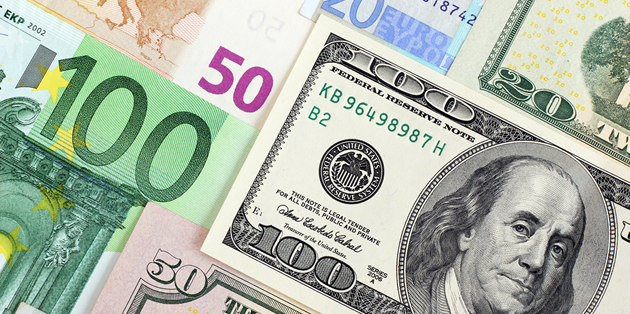- Could British Growth Stagnate? – Markit predicts low Q2 GDP
- Eurozone PMI Poor – Retail PMI contracts further
- Australian Dollar (AUD) Plummets – Another RBA rate cut expected by August
- Forecast: US Unemployment, Non-Farm Payrolls – Key US data on Friday
Pound Sterling (GBP) Trails Lower as Investors React to Growth Warnings
The Pound slumped against major rivals such as the Euro and US Dollar on Friday morning, but remained strong against some key commodity currencies including the Australian Dollar and New Zealand Dollar.
This week’s poor UK PMI reports appear to be weighing once again on Sterling as Markit and other economic groups issued warnings of British economic stagnation. Markit Chief Economist Chris Williamson stated on Thursday that Q2 Gross Domestic Product (GDP) could print dangerously close to zero.
US Dollar (USD) Bolsters Defences on Continuing Jobless Claims Report
Thursday saw the release of the latest US jobless claims data, which eventually allowed the US Dollar to remain strong, preventing a Pound recovery.
While the amount of new jobless claims indicated that 274k new claims had been made, higher than the expected figure of 260k, the number of continuing jobless claims dropped considerably more than predicted from 2130k to 2121k, despite forecasts suggesting it would only drop to 2128k.
The ‘Greenback’ may also strengthen as St. Louis Federal Reserve President James Bullard adopted a hawkish tone when he spoke on Thursday. He claimed that ‘global headwinds’ have subsided and that ‘Brexit’ concerns were not a considerable risk to the US economy.
The US Dollar could experience considerable movement when Unemployment and Non-Farm Payroll reports are released this afternoon.
Euro (EUR) Attempts Recovery, Slowed by Poor PMI
After advancing on Thursday, the GBP/EUR exchange rate began to drop again on Friday as investors responded to growth warnings from British economists.
The Euro remained largely uninspired throughout Thursday’s session with little more than a predictable European Central Bank (ECB) economic bulletin to drive traders. The bulletin was a dovish reminder to markets that the ECB intended to use as many easing measures as possible to drive the Eurozone economy to its 2.0% inflation targets.
Disappointing German PMI released on Friday means the Euro is unlikely to make a considerable recovery despite Britain’s poor data. The construction PMI worsened from 55.8 to 53.4, while Retail dropped from 54.1 to 51. Even worse was the Eurozone Retail PMI. Originally due to release yesterday, the April print saw a worsened contraction of 47.9 from March’s 49.2.
Australian Dollar (AUD) Plummets as RBA Hints at Further Cuts
While the GBP/AUD exchange rate slipped yesterday on strengthening demand for risky currencies, the pair shot up once again on Friday in reaction to the Reserve Bank of Australia’s (RBA) latest statement on monetary policy.
The statement included a forecast that core inflation would remain below targets, with analysts predicting that there is a 79% chance of the RBA cutting interest rates at its August meeting. As a result, the ‘Aussie’ plunged and GBP/AUD hit its highest point since February.
New Zealand Dollar (NZD) Weakens on Low Risk
The New Zealand Dollar attempted to make a recovery on Thursday, but as of Friday the Pound climbed once again on falling risk-sentiment. The ‘Kiwi’ has been caught in the cross-flows of falling stocks and bearish Australian Dollar investors.
Canadian Dollar (CAD) Flat as Oil Prices Fluctuate
GBP/CAD fluctuated on Friday. While the ‘Loonie’ fared better than its risky commodity currency peers due to an oil supply shortage, oil prices were unable to remain high due to a strengthening US Dollar.
Prices of oil had previously soared due to a wildfire in Canada that severely hampered oil production. However, damaged sentiment for Canadian businesses may have slowed ‘Loonie’ advances.


Comments are closed.